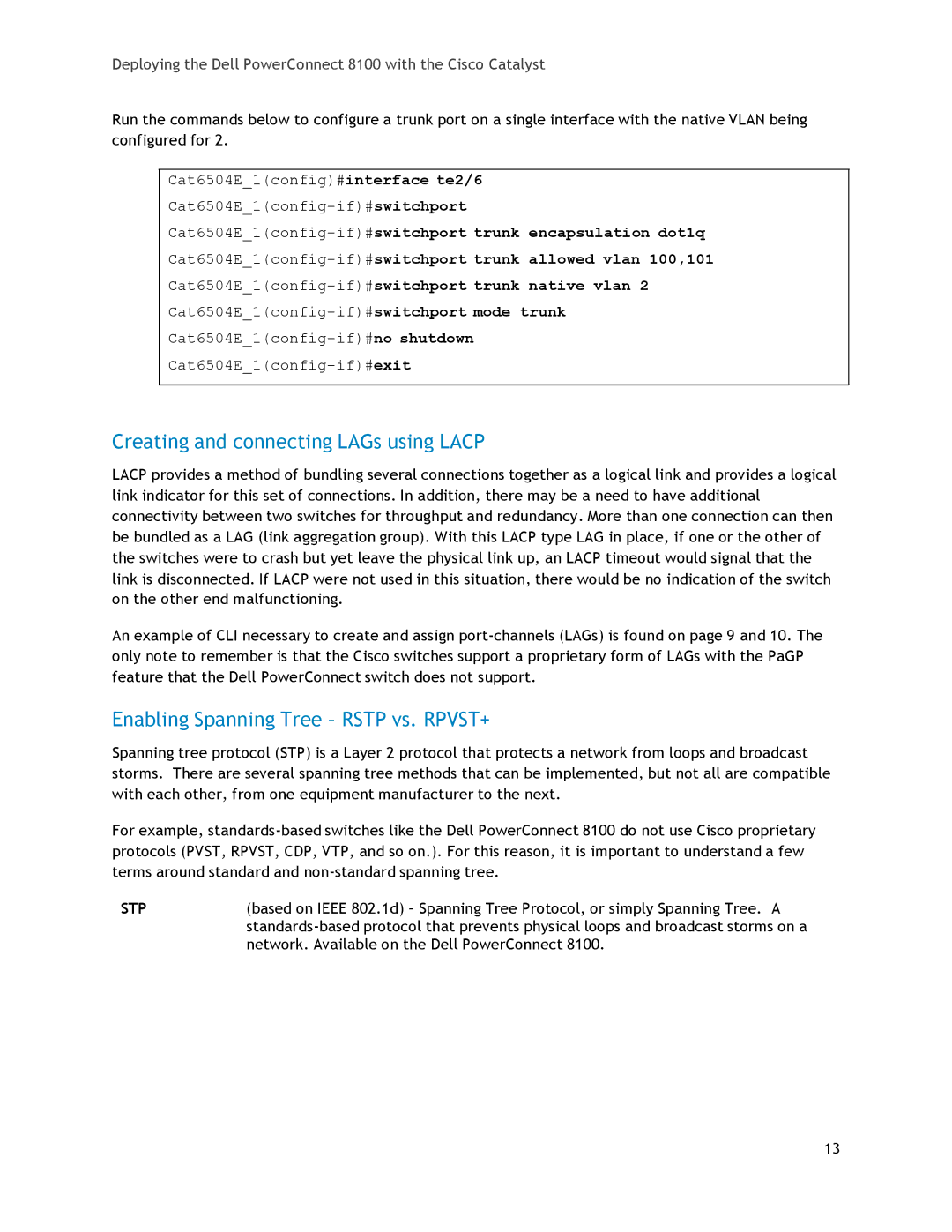
Deploying the Dell PowerConnect 8100 with the Cisco Catalyst
Run the commands below to configure a trunk port on a single interface with the native VLAN being configured for 2.
Cat6504E_1(config)#interface te2/6
Creating and connecting LAGs using LACP
LACP provides a method of bundling several connections together as a logical link and provides a logical link indicator for this set of connections. In addition, there may be a need to have additional connectivity between two switches for throughput and redundancy. More than one connection can then be bundled as a LAG (link aggregation group). With this LACP type LAG in place, if one or the other of the switches were to crash but yet leave the physical link up, an LACP timeout would signal that the link is disconnected. If LACP were not used in this situation, there would be no indication of the switch on the other end malfunctioning.
An example of CLI necessary to create and assign
Enabling Spanning Tree – RSTP vs. RPVST+
Spanning tree protocol (STP) is a Layer 2 protocol that protects a network from loops and broadcast storms. There are several spanning tree methods that can be implemented, but not all are compatible with each other, from one equipment manufacturer to the next.
For example,
STP | (based on IEEE 802.1d) – Spanning Tree Protocol, or simply Spanning Tree. A |
| |
| network. Available on the Dell PowerConnect 8100. |
13
